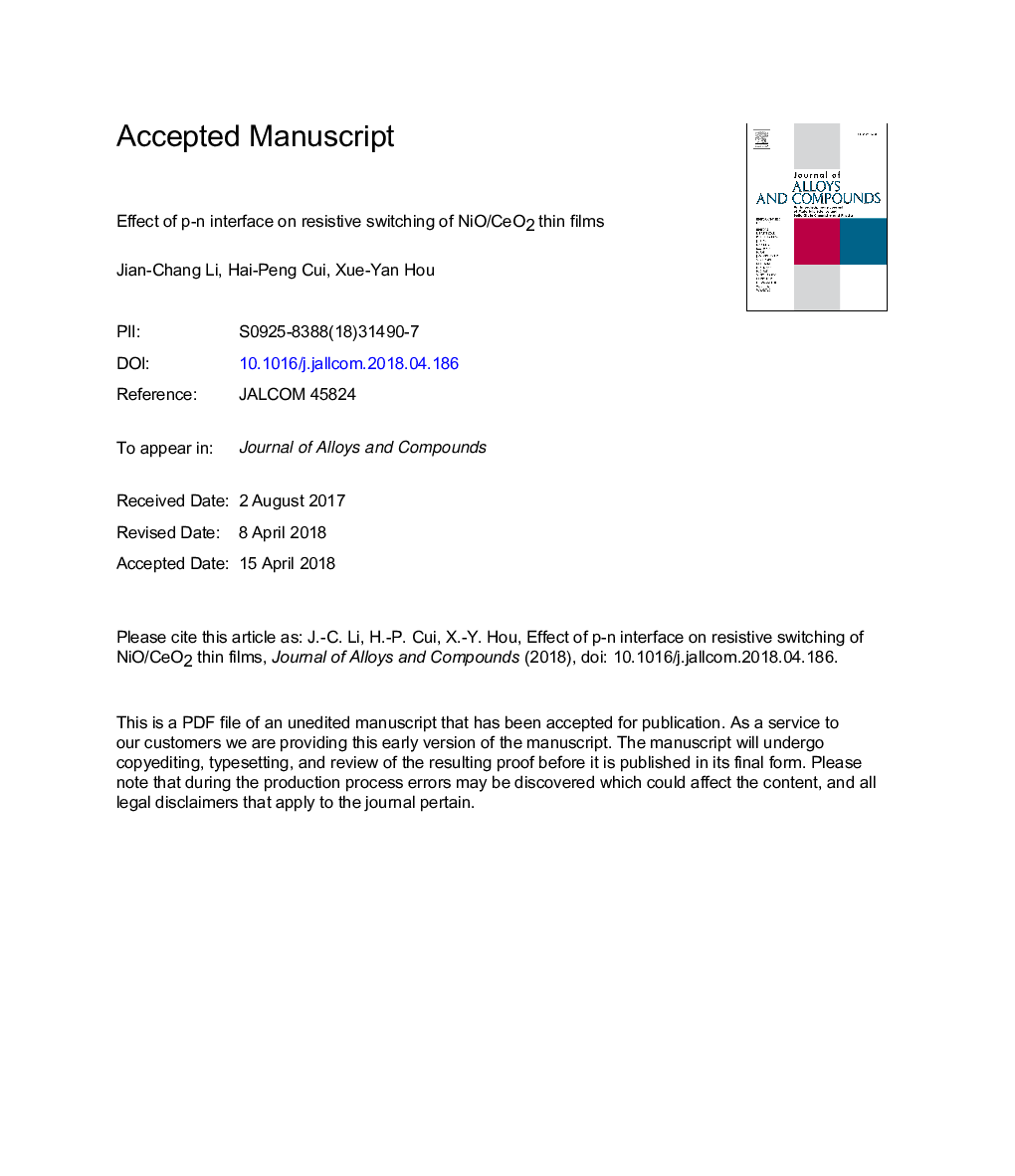| Article ID | Journal | Published Year | Pages | File Type |
|---|---|---|---|---|
| 7991566 | Journal of Alloys and Compounds | 2018 | 25 Pages |
Abstract
To investigate how the pân interface affects the resistive switching, we studied bilayer and nanocomposite films composed of pâtype NiO and nâtype CeO2. The samples were fabricated on ITO substrate by solâgel spin coating. The current-voltage curves were measured with GaIn liquid top electrode, which exhibit reversible bipolar resistive switching with the maximum ON/OFF ratio of â¼103 at a read voltage of +0.5 V. The ON/OFF ratio of bilayer samples is three times improved than that of the nanocomposite film. This is ascribed to the larger depletion width in bilayer film than that of the nanocomposite one. We show that the pân structure plays a key role in the formation/rupture of filamentary paths due to different depletion interfaces of the films.
Related Topics
Physical Sciences and Engineering
Materials Science
Metals and Alloys
Authors
Jian-Chang Li, Hai-Peng Cui, Xue-Yan Hou,
